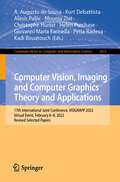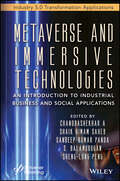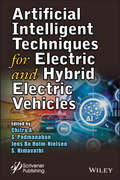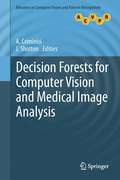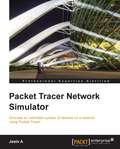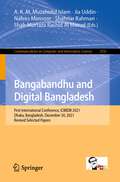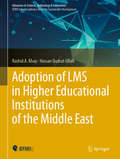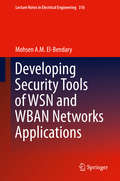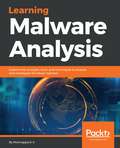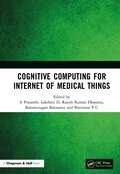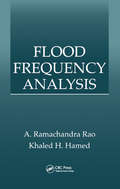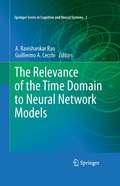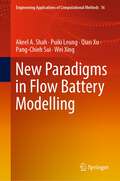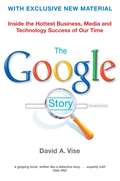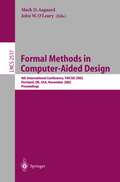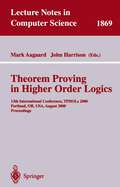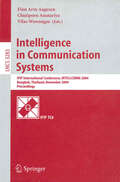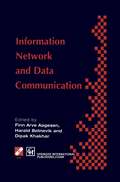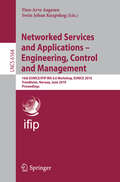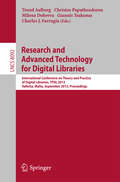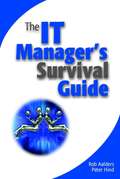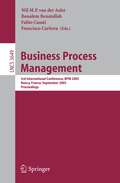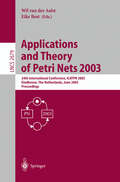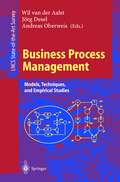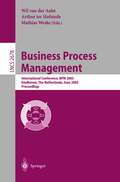- Table View
- List View
Computer Vision, Imaging and Computer Graphics Theory and Applications: 17th International Joint Conference, VISIGRAPP 2022, Virtual Event, February 6–8, 2022, Revised Selected Papers (Communications in Computer and Information Science #1815)
by A. Augusto de Sousa Kurt Debattista Alexis Paljic Mounia Ziat Christophe Hurter Helen Purchase Giovanni Maria Farinella Petia Radeva Kadi BouatouchThis book constitutes the referred proceedings of the 17th International Joint Conference on Computer Vision, Imaging and Computer Graphics Theory and Applications, VISIGRAPP 2022, Virtual Event, February 6–8, 2022. The 15 full papers included in this book were carefully reviewed and selected from 392 submissions. The purpose of VISIGRAPP is to bring together researchers and practitioners interested in both theoretical advances and applications of computer vision, computer graphics and information visualization. VISIGRAPP is composed of four co-located conferences, each specialized in at least one of the aforementioned main knowledge areas, namely GRAPP, IVAPP, HUCAPP and VISAPP.
Metaverse and Immersive Technologies: An Introduction to Industrial, Business and Social Applications (Artificial Intelligence and Soft Computing for Industrial Transformation)
by Chandrashekhar A Shaik Himam Saheb Sandeep Kumar Panda S. Balamurugan Sheng-Lung PengThis book provides a thorough explanation of how the technology behind metaverse and other virtual reality is changing the world. The primary objective is to present the revolutionary innovation of the 21st Century—the metaverse—and exhibit its wide range of applications in different domains. Although blockchain and VR/AR were the first popularly known applications of the metaverse, several other applications also exist. While some still believe the metaverse is overhyped, in reality, it is transforming almost every industry—healthcare, 3D, 4D, industry, game industry, business management, artificial intelligence, and IoT, just to name a few. This technological breakthrough not only paved the way for virtual reality but provides useful solutions for other areas of technology. The unique nature of the technology, which is a single, shared, immersive, persistent, 3D virtual space where humans experience life in ways not possible in the physical world, makes it suitable for all real-world applications. The technology has great potential to transform business, and companies are already in the race for different product offerings
Artificial Intelligent Techniques for Electric and Hybrid Electric Vehicles
by Chitra A. P. Sanjeevikumar, Jens Bo Holm-Nielsen S. HimavathiElectric vehicles/hybrid electric vehicles (EV/HEV) commercialization is still a challenge in industries in terms of performance and cost. The performance along with cost reduction are two tradeoffs which need to be researched to arrive at an optimal solution. This book focuses on the convergence of various technologies involved in EV/HEV. The book brings together the research that is being carried out in the field of EV/HEV whose leading role is by optimization techniques with artificial intelligence (AI). Other featured research includes green drive schemes which involve the possible renewable energy sources integration to develop eco-friendly green vehicles, as well as Internet of Things (IoT)-based techniques for EV/HEVs. Electric vehicle research involves multi-disciplinary expertise from electrical, electronics, mechanical engineering and computer science. Consequently, this book serves as a point of convergence wherein all these domains are addressed and merged and will serve as a potential resource for industrialists and researchers working in the domain of electric vehicles.
Decision Forests for Computer Vision and Medical Image Analysis (Advances in Computer Vision and Pattern Recognition)
by A. Criminisi and J. ShottonThis practical and easy-to-follow text explores the theoretical underpinnings of decision forests, organizing the vast existing literature on the field within a new, general-purpose forest model. Topics and features: with a foreword by Prof. Y. Amit and Prof. D. Geman, recounting their participation in the development of decision forests; introduces a flexible decision forest model, capable of addressing a large and diverse set of image and video analysis tasks; investigates both the theoretical foundations and the practical implementation of decision forests; discusses the use of decision forests for such tasks as classification, regression, density estimation, manifold learning, active learning and semi-supervised classification; includes exercises and experiments throughout the text, with solutions, slides, demo videos and other supplementary material provided at an associated website; provides a free, user-friendly software library, enabling the reader to experiment with forests in a hands-on manner.
Packet Tracer Network Simulator
by Jesin AA practical, fast-paced guide that gives you all the information you need to successfully create networks and simulate them using Packet Tracer. Packet Tracer Network Simulator is aimed at students, instructors, and network administrators who wish to use this simulator to learn how to perform networking instead of investing in expensive, specialized hardware. This book assumes that you have a good amount of Cisco networking knowledge, and it will focus more on Packet Tracer rather than networking.
Bangabandhu and Digital Bangladesh: First International Conference, ICBBDB 2021, Dhaka, Bangladesh, December 30, 2021, Revised Selected Papers (Communications in Computer and Information Science #1550)
by A. K. M. Muzahidul Islam Jia Uddin Nafees Mansoor Shahriar Rahman Shah Murtaza Rashid Al MasudThis book constitutes selected papers presented during the First International Conference on Bangabandhu and Digital Bangladesh, ICBBDB 2021, held in Dhaka, Bangladesh, in December 2021. Due to the COVID-19 pandemic the conference was partly held online. The 16 papers presented were thoroughly reviewed and selected from the 90 submissions. They present research in the areas of artificial intelligence, machine learning, image processing, blockchain technology, human-computer interaction, etc.
Adoption of LMS in Higher Educational Institutions of the Middle East (Advances in Science, Technology & Innovation)
by Rashid A. Khan Hassan Qudrat-UllahThis book discusses the adoption of learning management systems (LMS) in higher education institutions. It presents influential predictors that may impact instructors’ behavioral intention to adopt learning management systems in the context of Arab culture, as well as a unique model of technology acceptance that draws on and combines previous technology adoption models (i.e., a modified unified theory of acceptance and use of technology model – UTAUT2). Moreover, this study extends the UTAUT2 model by including Hofstede’s (1980) cultural dimensions, and technology awareness as the moderators of the model. It also describes the explanatory technique approach used to collect quantitative data from the instructors at higher education institutions in Saudi Arabia and were analyzed with structural equation modeling using SPSS/Amos software. The findings revealed that facilitating conditions were the strongest predictor of behavioral intention to adopt an LMS, followed by performance expectancy and hedonic motivation, technology awareness, and cultural dimensions exerted a moderating influence on instructors’ behavioral intention to use LMS in their teaching. By including new constructs, this becomes the first study of its kind exploring instructors’ use of LMS in Higher Educational Institutions of Saudi Arabia and other countries of the Middle East. It offers practical insights for a broad range of researchers and professionals at higher education institutions and serves as a reference guide for designers of learning management systems (e.g., blackboard systems), policymakers, and the Ministry of Education staff.
Developing Security Tools of WSN and WBAN Networks Applications (Lecture Notes in Electrical Engineering #316)
by Mohsen A. M. El-BendaryThis book focuses on two of the most rapidly developing areas in wireless technology (WT) applications, namely, wireless sensors networks (WSNs) and wireless body area networks (WBANs). These networks can be considered smart applications of the recent WT revolutions. The book presents various security tools and scenarios for the proposed enhanced-security of WSNs, which are supplemented with numerous computer simulations. In the computer simulation section, WSN modeling is addressed using MATLAB programming language.
Learning Malware Analysis: Explore The Concepts, Tools, And Techniques To Analyze And Investigate Windows Malware
by Monnappa K AMalware analysis and memory forensics are powerful analysis and investigation techniques used in reverse engineering, digital forensics, and incident response. This book teaches you the concepts, tools, and techniques to determine the behavior and characteristics of malware using malware analysis and memory forensics.
Cognitive Computing for Internet of Medical Things
by A. Prasanth, D. Lakshmi, Rajesh Kumar Dhanaraj, Balamurugan Balusamy, P.C. SherimonCognitive Computing for Internet of Medical Things (IoMT) offers a complete assessment of the present scenario, role, challenges, technologies, and impact of IoMT-enabled smart healthcare systems. It contains chapters discussing various biomedical applications under the umbrella of the IoMT. Key Features Exploits the different prospects of cognitive computing techniques for the IoMT and smart healthcare applications Addresses the significance of IoMT and cognitive computing in the evolution of intelligent medical systems for biomedical applications Describes the different computing techniques of cognitive intelligent systems from a practical point of view: solving common life problems Explores the technologies and tools to utilize IoMT for the transformation and growth of healthcare systems Focuses on the economic, social, and environmental impact of IoMT-enabled smart healthcare systems This book is primarily aimed at graduates, researchers and academicians working in the area of development of the application of the of the application of the IoT in smart healthcare. Industry professionals will also find this book helpful.
Flood Frequency Analysis
by A. Ramachandra Rao and Khaled H. HamedAfter five decades, the field of Statistical Hydrology continues to evolve and remains a very active area of investigation. Researchers continue to examine various distributions, methods of estimation of parameters, and problems related to regionalization. However, much of this research appears in journals and reports and usually in a form not easi
The Relevance of the Time Domain to Neural Network Models (Springer Series in Cognitive and Neural Systems #3)
by A. Ravishankar Rao and Guillermo A. CecchiA significant amount of effort in neural modeling is directed towards understanding the representation of information in various parts of the brain, such as cortical maps [6], and the paths along which sensory information is processed. Though the time domain is integral an integral aspect of the functioning of biological systems, it has proven very challenging to incorporate the time domain effectively in neural network models. A promising path that is being explored is to study the importance of synchronization in biological systems. Synchronization plays a critical role in the interactions between neurons in the brain, giving rise to perceptual phenomena, and explaining multiple effects such as visual contour integration, and the separation of superposed inputs. The purpose of this book is to provide a unified view of how the time domain can be effectively employed in neural network models. A first direction to consider is to deploy oscillators that model temporal firing patterns of a neuron or a group of neurons. There is a growing body of research on the use of oscillatory neural networks, and their ability to synchronize under the right conditions. Such networks of synchronizing elements have been shown to be effective in image processing and segmentation tasks, and also in solving the binding problem, which is of great significance in the field of neuroscience. The oscillatory neural models can be employed at multiple scales of abstraction, ranging from individual neurons, to groups of neurons using Wilson-Cowan modeling techniques and eventually to the behavior of entire brain regions as revealed in oscillations observed in EEG recordings. A second interesting direction to consider is to understand the effect of different neural network topologies on their ability to create the desired synchronization. A third direction of interest is the extraction of temporal signaling patterns from brain imaging data such as EEG and fMRI. Hence this Special Session is of emerging interest in the brain sciences, as imaging techniques are able to resolve sufficient temporal detail to provide an insight into how the time domain is deployed in cognitive function. The following broad topics will be covered in the book: Synchronization, phase-locking behavior, image processing, image segmentation, temporal pattern analysis, EEG analysis, fMRI analyis, network topology and synchronizability, cortical interactions involving synchronization, and oscillatory neural networks. This book will benefit readers interested in the topics of computational neuroscience, applying neural network models to understand brain function, extracting temporal information from brain imaging data, and emerging techniques for image segmentation using oscillatory networks
New Paradigms in Flow Battery Modelling (Engineering Applications of Computational Methods #16)
by Akeel A. Shah Puiki Leung Qian Xu Pang-Chieh Sui Wei XingThis book provides a comprehensive review of the latest modelling developments in flow batteries, as well as some new results and insights. Flow batteries have long been considered the most flexible answer to grid scale energy storage, and modelling is a key component in their development. Recent modelling has moved beyond macroscopic methods, towards mesoscopic and smaller scales to select materials and design components. This is important for both fundamental understanding and the design of new electrode, catalyst and electrolyte materials. There has also been a recent explosion in interest in machine learning for electrochemical energy technologies. The scope of the book includes these latest developments and is focused on advanced techniques, rather than traditional modelling paradigms. The aim of this book is to introduce these concepts and methods to flow battery researcher, but the book would have a much broader appeal since these methods also employed in other battery and fuel cell systems and far beyond. The methods will be described in detail (necessary fundamental material in Appendices). The book appeals to graduate students and researchers in academia/industry working in electrochemical systems, or those working in computational chemistry/machine learning wishing to seek new application areas.
The Google Story: For Google's 10th Birthday
by David A. ViseThe Google Story is the definitive account of one of the most remarkable organizations of our time. Every day over sixty-four million people use Google in more than one hundred languages, running billions of searches for information on everything and anything. Through the creative use of cutting-edge technology and a series of groundbreaking business ideas, Google's thirty-five year old founders, Sergey Brin and Larry Page, have in ten years taken Google from being just another internet start-up to a company with a market value of over US$80 billion. Based on scrupulous research and extraordinary access to the inner workings of Google, this book takes you inside the creation and growth of a company that has become so familiar its name is used as a verb around the world. But even as it rides high, Google wrestles with difficult challenges in a business that changes at lightning speed. In this new and updated edition to celebrate Google’s 10th birthday, David A. Vise has written a new preface and new final chapter which look at further developments since 2005 and how Google will continue to expand and innovate while trying to follow its founders' mantra: DO NO EVIL 'If you want to know how the Google boys became wealthy and powerful beyond dreams, then David Vise's assiduously researched The Google Story is for you.' Sunday Telegraph 'If Google were to take on critical faculties as well as its other attributes Vise's book would probably come out on top.' The Times
Formal Methods in Computer-Aided Design: 4th International Conference, FMCAD 2002, Portland, OR, USA, November 6-8, 2002, Proceedings (Lecture Notes in Computer Science #2517)
by Mark D. Aagaard John W. O'LearyThis volume contains the proceedings of the Fourth Biennial Conference on F- mal Methods in Computer-Aided Design (FMCAD). The conference is devoted to the use of mathematical methods for the analysis of digital hardware c- cuits and systems. The workreported in this bookdescribes the use of formal mathematics and associated tools to design and verify digital hardware systems. Functional veri?cation has become one of the principal costs in a modern computer design e?ort. FMCAD provides a venue for academic and industrial researchers and practitioners to share their ideas and experiences of using - screte mathematical modeling and veri?cation. Over the past 20 years, this area has grown from just a few academic researchers to a vibrant worldwide com- nity of people from both academia and industry. This volume includes 23 papers selected from the 47 submitted papers, each of which was reviewed by at least three program committee members. The history of FMCAD dates backto 1984, when the earliest meetings on this topic occurred as part of IFIP WG10.2.
Theorem Proving in Higher Order Logics: 13th International Conference, TPHOLs 2000 Portland, OR, USA, August 14-18, 2000 Proceedings (Lecture Notes in Computer Science #1869)
by Mark Aagaard John HarrisonThis volume is the proceedings of the 13th International Conference on Theo rem Proving in Higher Order Logics (TPHOLs 2000) held 14-18 August 2000 in Portland, Oregon, USA. Each of the 55 papers submitted in the full rese arch category was refereed by at least three reviewers who were selected by the program committee. Because of the limited space available in the program and proceedings, only 29 papers were accepted for presentation and publication in this volume. In keeping with tradition, TPHOLs 2000 also offered a venue for the presen tation of work in progress, where researchers invite discussion by means of a brief preliminary talk and then discuss their work at a poster session. A supplemen tary proceedings containing associated papers for work in progress was published by the Oregon Graduate Institute (OGI) as technical report CSE-00-009. The organizers are grateful to Bob Colwell, Robin Milner and Larry Wos for agreeing to give invited talks. Bob Colwell was the lead architect on the Intel P6 microarchitecture, which introduced a number of innovative techniques and achieved enormous commercial success. As such, he is ideally placed to offer an industrial perspective on the challenges for formal verification. Robin Milner contributed many key ideas to computer theorem proving, and to functional programming, through his leadership of the influential Edinburgh LCF project.
Intelligence in Communication Systems: IFIP International Conference, INTELLCOMM 2004, Bangkok, Thailand, November 23-26, 2004, Proceedings (Lecture Notes in Computer Science #3283)
by Finn Arve Aagesen Chutiporn Anutariya Vilas WuwongseThe 2004 IFIP International Conference on Intelligence in Communication S- tems(INTELLCOMM2004),heldinBangkok,Thailand,23–26November2004, was the successor and an expansion of SMARTNET, a series of annual conf- ences on intelligence in networks held during 1995–2003 under the auspices of IFIP TC6’s Working Group 6. 7. The Internet and Web provide more connection facilities, hence the man-man, man-machine and machine-machine interactions will increase and communication will have an important role in modern s- tems. Inordertoobtaine?ectiveande?cientcommunication,artistic,socialand technical issues have to be tackled in a holistic and integrated manner. However, communicationtechniques,conceptsandsolutionswhichhavebeendevelopedso far treat these issues separately, so that there arises a need for communication researchers and practitioners in di?erent ?elds (engineering, science and arts) to meet, share their experience and explore all possibilities of developing in- grated and advanced solutions which incorporate ideas from such disciplines as communication arts, art design, linguistics, Web technologies, computer system architecture and protocols, computer science and arti?cial intelligence. INTELLCOMM 2004 was jointly sponsored by IFIP WG 6. 7: Smart N- works and WG 6. 4: Internet Applications Engineering and aimed to provide an international forum which brings academia, researchers, practitioners and s- vice providers together. The discussion areas covered the latest research topics andadvancedtechnologicalsolutionsintheareaofintelligenceincommunication systems, ranging from architectures for adaptable networks/services and Sem- ticWeb/Webservicestechnologiestointelligentserviceapplicationinterfaceand intelligent human interaction. INTELLCOMM 2004 received 112 paper submissions from 28 countries. From these, 24 were accepted, and are included in this proceedings. There were also 3 papers accepted for poster presentation, published separately.
Information Networks and Data Communication (IFIP Advances in Information and Communication Technology)
by Finn Arve Aagesen Harald Botnevik Dipak KhakharTeleservice is a common concept for distributed application services related to the use of telecommunication equipment, PCs, workstations and mainframes. Teleservices represent a diversity of applications related to various user and vendor cultures such as traditional telecommunications services, E-mail services, cooperative work, applications, multimedia applications, mobile services and intelligent network services. The complexity and diversity of teleservices are increasing, but of greater importance is the change in the way in which teleservices are designed, delivered and maintained. Information Network and Data Communications captures the cultural as well as the technical variety of teleservice.
Networked Services and Applications - Engineering, Control and Management: 16th EUNICE/IFIP WG 6.6 Workshop, EUNICE 2010, Trondheim, Norway, June 28-30, 2010, Proceedings (Lecture Notes in Computer Science #6164)
by Finn Arve Aagesen Svein J. KnapskogThe EUNICE (European Network of Universities and Companies in Information and Communication technology) (http://www.eunice-forum.org) mission is to jointly - velop and promote the best and most compatible standard of European higher edu- tion and professionals in ICT by increasing scientific and technical knowledge in the field of ICT and developing their applications in the economy. The EUNICE Wo- shop is an annual event. This year the workshop was sponsored by IFIP TC 6 WG 6.6: Management of Networks and Distributed Systems. Eight years ago, the seventh edition of the EUNICE workshop took place in Tro- heim with the topic “Adaptable Networks and Teleservices.” Since then “adaptability” has become a topic which is found in most ICT conferences. The concept teleservices, which is a telecommunication domain concept from the 1980s, has been lifted out of the telecom community and is now found with new and sometimes mysterious names such as service–oriented architecture and cloud computing.
Research and Advanced Technology for Digital Libraries: International Conference on Theory and Practice of Digital Libraries, TPDL 2013, Valletta, Malta, September 22-26, 2013, Proceedings (Lecture Notes in Computer Science #8092)
by Trond Aalberg Christos Papatheodorou Milena Dobreva Giannis Tsakonas Charles J. FarrugiaThis book constitutes the refereed proceedings of the International Conference on Theory and Practice of Digital Libraries, TPDL 2013 (formerly European Conference on Research and Advanced Technology for Digital Libraries, ECDL) held in Valletta, Malta, in September 2013. The 24 full papers, 13 short papers, 22 posters and 8 demonstrations presented in this volume were carefully reviewed and selected from 158 submissions. The papers cover a wide range of research topics, clustered in four broader areas: foundation, infrastructures, content, and services. They have been organized in topical sections on conceptual models and formal issues, aggregation and archiving, user behavior, digital curation, mining and extraction, architectures and interoperability, interfaces to digital libraries, semantic web, information retrieval and browsing, and preservation. Also included are 6 tutorials and 2 panels.
The IT Manager's Survival Guide
by Rob Aalders Peter HindAccessible, refreshingly candid, but above all helpful, this pragmatic guide addresses a real need by dealing with the problems that face the new IT manager. By providing a number of practical recommendations and approaches including how to make the transition from technical professional to manager and dealing with people, to giving advice and guidance on organization structure, architecture and planning approaches, this book covers a whole raft of issues essential to managing an IT unit. If you have chosen to move from the safe haven of technology to the unpredictable world of management, this book could make the difference between success and failure. "The IT Manager's Survival Guide is well named. Aimed at the techie becoming an IT Manager it covers the many alligators of IT management - from legacy systems to managing vendors - in easy chunks with checklists. It also provides the new manager with help to get ahead of the game by including articles from experts on what is wrong with IT management and a set of short reviews of management theorists from Strassman to Mayo. I recommend this book for those who would like to buck the trend - the average tenure of an IT Manager is about 900 days - and run an IT outfit appreciated by customers and staff." Gill Ringland, Fellow of the British Computer Society and Member of the BCS Management Forum. Author of Scenario Planning: Managing for the Future.
Business Process Management: 3rd International Conference, BPM 2005, Nancy, France, September 5-8, 2005, Proceedings (Lecture Notes in Computer Science #3649)
by Wil M. P. Van Der Aalst Boualem Benatallah Fabio Casati Francisco CurberaThis volume contains the proceedings of the 3rd International Conference on Business Process Management (BPM 2005), organized by LORIA in Nancy, France, September 5–8, 2005. This year, BPM included several innovations with respect to previous e- tions, most notably the addition of an industrial program and of co-located workshops. This was the logical result of the signi?cant (and still growing) - dustrial interest in the area and of the broadening of the research communities working on BPM topics. The interest in business process management (and in the BPM conference) was demonstrated by the quantity and quality of the paper submissions. We received over 176 contributions from 31 countries, accepting 25 of them as full papers (20 research papers and 5 industrial papers) while 17 contributions were accepted as short papers. In addition to the regular, industry, and short pres- tations invited lectures weregiven by Frank Leymannand Gustavo Alonso.This combination of research papers, industrial papers, keynotes, and workshops, all of very high quality, has shown that BPM has become a mature conference and the main venue for researchers and practitioners in this area. We would like to thank the members of the Program Committee and the reviewers for their e?orts in selecting the papers. They helped us compile an excellent scienti?c program. For the di?cult task of selecting the 25 best papers (14% acceptance rate) and 17 short papers each paper was reviewed by at least three reviewers (except some out-of-scope papers).
Applications and Theory of Petri Nets 2003: 24th International Conference, ICATPN 2003, Eindhoven, The Netherlands, June 23-27, 2003, Proceedings (Lecture Notes in Computer Science #2679)
by Wil Van Der Aalst Eike BestThe refereed proceedings of the 24th International Conference on Applications and Theory of Petri Nets, ICATPN 2003, held in Eindhoven, The Netherlands, in June 2003. The 25 revised full papers presented together with 6 invited contributions were carefully reviewed and selected from 77 submissions. All current issues on research and development in the area of Petri nets are addressed, in particular concurrent systems design and analysis, model checking, networking, business process modeling, formal methods in software engineering, agent systems, systems specification, systems validation, discrete event systems, protocols, and prototyping.
Business Process Management: Models, Techniques, and Empirical Studies (Lecture Notes in Computer Science #1806)
by Wil Van Der Aalst Jörg Desel Andreas OberweisBusiness processes are among today's hottest topics in the science and practice of information systems. Business processes and workflow management systems attract a lot of attention from R&D professionals in software engineering, information systems, business-oriented computer science, and management sciences.The carefully reviewed chapters contributed to this state-of-the-art survey by internationally leading scientists consolidate work presented at various workshops on the topic organized by the editors of the book in the past few years. The book spans the whole spectrum of business process management ranging from theoretical aspects, conceptual models, and application scenarios to implementation issues. It will become a valuable source of reference and information for R&D professionals active in the fascinating interdisciplinary area of business process management and for ambitious practitioners.
Business Process Management: International Conference, BPM 2003, Eindhoven, The Netherlands, June 26-27, 2003, Proceedings (Lecture Notes in Computer Science #2678)
by Wil Van Der Aalst Arthur Ter Hofstede Mathias WeskeThe refereed proceedings of the International Conference on Business Process Management, BPM 2003, held in Eindhoven, The Netherlands, in June 2003. The 25 revised full papers presented together with an introductory survey article were carefully reviewed and selected from 77 submissions. Among the issues addressed are Web services, workflow modeling, business process modeling, collaborative computing, computer-supported collaborative work, workflow patterns, business process engineering, business process patterns, workflow systems, Petri nets, process services, business process reengineering, and business process management tools.
